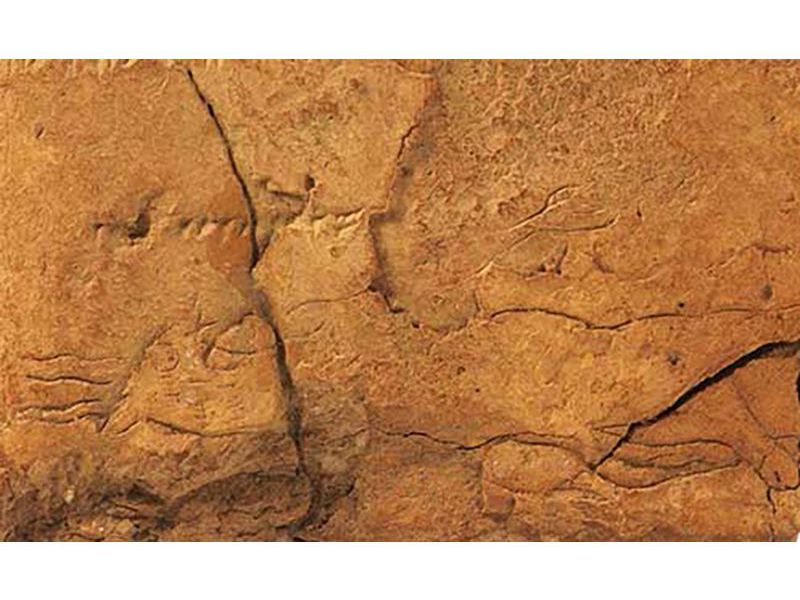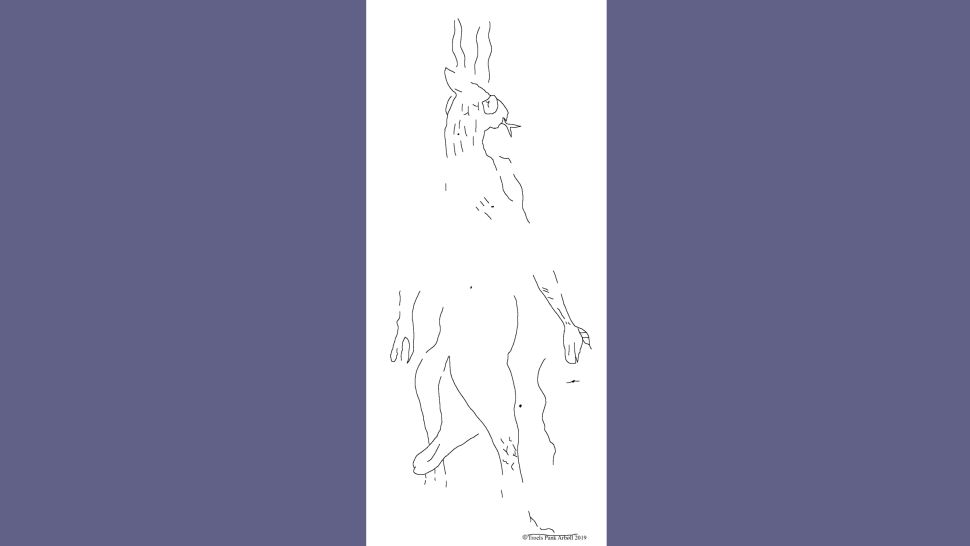Demon with Forked Tongue Found on Clay Tablet in Library of Assyrian Exorcists
On a 2,700-year-old clay, a demonic figure with curved horns, a forked tongue, tail, and reptilian eyes long lurked was Unobserved is placed at housed of Berlin’s Vorderasiatisches Museum, a new study published in Le Journal des Médecines Cunéiformes suggests.

The Assyriologist Troels Pank Arbøll of the University of Copenhagen discovered the rare illustration while studying the cuneiform text five years ago.
Researchers have known of the artifact’s existence for decades, but as Arbøll tells BBC Tom Metcalfe, he was the first to notice the creature’s damaged outline.
The writing on the tablet suggests its creator viewed the demon as the cause of convulsions and other involuntary movements then called bennu but now understood as epilepsy.
As per the study, the anthropomorphic figure measures around 2.5 inches tall and one inch wide. Its neck is long, and its body appears to be covered in scales or hair.
Although the majority of the demon’s torso has been effaced over the centuries, its claw-like hands and feet remain partially visible.
Magic and medicine were intertwined in ancient Assyria. According to a University of Copenhagen statement, the Assyrians believed diseases were caused by gods, demons or witchcraft. To treat these afflictions, healers turned to drugs, rituals or incantations.
Interestingly, explains Arbøll to Metcalfe, the newly described drawing differs from spiritual images typically found on cuneiform tablets. Unlike “comparable drawings, which generally depict a figurine made during a ritual to remove the illness,” the tablet depicts an “actual demon.”
As the researcher notes in the statement, the work presents the mystical being “as the healer who wrote the text must have imagined it.”

The tablet’s text indicates that ancient “doctors” would have blamed bennu’s occurrence on a demon acting on behalf of the Mesopotamian moon god Sîn.
The standard prescription, according to Arbøll, was to wear a leather amulet and breathe in smoke from certain ingredients charred on hot coals.
Arbøll previously completed a separate analysis of cuneiform tablets cataloging the medical training of a man named Kisir-Ashur.
This microhistory offered new insights on ancient Assyrian medical practices, including how doctors were “trained in the art of diagnosing and treating illnesses, and their causes,” the Assyriologist told ScienceNordic’s Bo Christensen in 2018.
Like the tablets studied for this earlier survey, the demon manuscript was unearthed in Kisir-Ashur’s private library. He and his family lived in the city of Assur, located in what is now northern Iraq, around 650 B.C., through BBC. Metcalfe points out that the bennu text in question was likely copied from a far older document.
Kisir-Ashur and others like him are often described as exorcists, but Arbøll told Christensen that this title is a mistranslation, as these individuals also handled non-spiritual issues.
“He does not work simply with religious rituals, but also with plant-based medical treatments,” the researcher said. “It is possible that he studied the effects of venom from scorpions and snakes on the human body and that he perhaps tried to draw conclusions based on his observations.”





